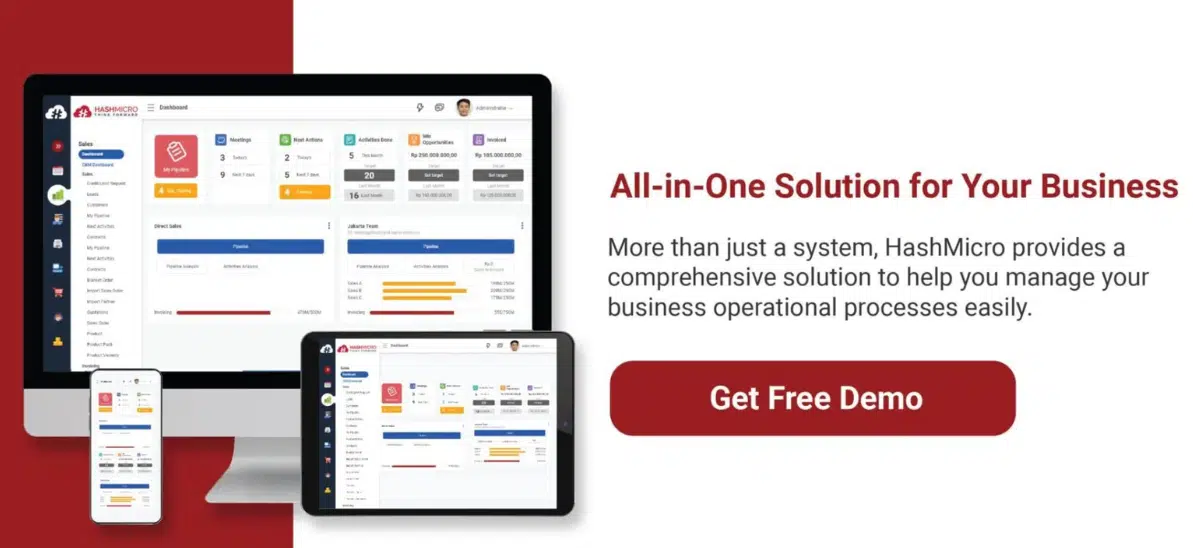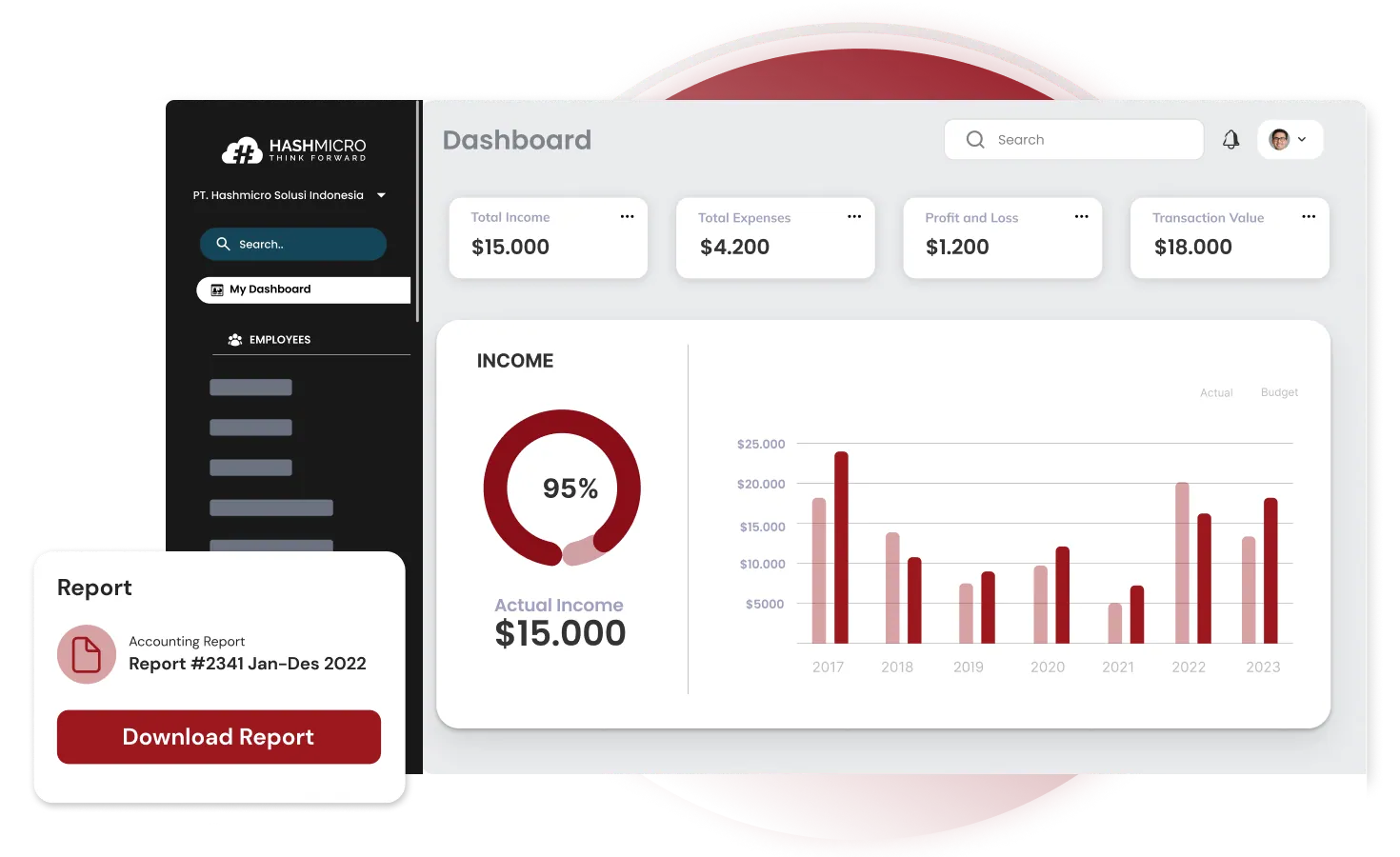Has your company ever experienced difficulties managing intercompany transactions, such as mismatched records, duplicate data, or complex financial reporting requirements? Implementing an effective intercompany management system is the answer!
When these challenges are overlooked, they can lead to inaccurate financial statements, tax compliance issues, and reduced transparency. It can ultimately damage stakeholder trust and decrease your company’s overall value.
Adopting proper intercompany transaction management practices can help you overcome these issues. Accounting software offers the ideal solution by automating and integrating the recording and reporting of intercompany activities within your business group.
Read this article to gain deeper insights into the importance of managing intercompany transactions and how it can boost your company’s operational efficiency.
Table of Content:
Table of Content
Key Takeaways
|
What are Intercompany Transactions?
Intercompany transactions aim to eliminate the effects of internal transactions—those occurring between entities within the same corporate group—to ensure that financial reports reflect only dealings with external third parties.
This process excludes internal activities such as transactions between subsidiaries or between a parent company and its subsidiaries. Typical scenarios include internal sales, service charges, inventory transfers, cost sharing, royalties, and intercompany loans.
Key components of intercompany accounting include establishing governance and policies, managing transfer and organizing data and transactions, handling netting and settlements, performing reconciliations and eliminations, and generating accurate reports.
Types of Intercompany Transactions
After discussing the definition of an intercompany transaction, it is now time to explore its various types. Here are the types of intercompany transactions, along with their explanations:
- Downstream transactions
Transactions originating from a parent company and directed to a subsidiary, like issuing a loan, are adjusted during financial consolidation. Intercompany accounting removes the parent’s recorded interest income and the subsidiary’s corresponding interest expense to avoid overstating financial results.
- Upstream transactions
When a subsidiary conducts a transaction with its parent company, such as selling land to the parent, any resulting profit or loss is removed during consolidation to ensure the financial statements reflect only external transactions.
- Lateral transactions
In cases where two subsidiaries engage in a transaction, such as one supplying raw materials to the other, any internal profit generated is eliminated during consolidation to present accurate financial outcomes.
How to Record Intercompany Transactions
The method of recording intercompany transactions varies depending on the type of transaction. For instance, when one subsidiary sells inventory to another, the selling entity records the transaction as accounts receivable, while the purchasing entity lists it as accounts payable.
Similarly, if a parent company provides a loan to one of its subsidiaries, the loan will appear as an asset on the parent’s books and a liability on the subsidiary’s. Regardless of the transaction type, these intercompany entries will be eliminated while preparing the consolidated financial statements.
Companies must accurately record intercompany transactions to ensure financial transparency and compliance with accounting standards. Managing intercompany transactions doesn’t have to be complex. Using accounting software can streamline the process and enhance accuracy.
HashMicro’s Accounting Software can be the best solution for your business. It integrates various features and ERP systems to streamline your intercompany transactions. Interested in learning more about the costs? Click the banner below to get a personalized pricing plan!
Why are Intercompany Transactions Important?
Transactions between entities within a group of companies are crucial to the accounting process. In companies with multiple subsidiaries or divisions, most financial activities often occur internally among these units.
Accounting for intercompany transactions management is crucial in enabling companies with complex structures to prepare accurate and consolidated financial statements. It aims to create transparency in the economic condition and prevent data conflicts or discrepancies.
Here are some other points that can show intercompany transactions are essential:
- Review the accounting policies employed by the company in managing transactions between entities within the group.
- Assess the company’s level of compliance and reporting to tax authorities and applicable regulations.
- Determine the potential liabilities that will arise in the future to other entities within the same group of companies.
- Analyze the frequency and value of intercompany transactions and their effect on the business’s overall financial performance.
- Identify the characteristics and primary reasons for inter-entity transactions within your business group.
Challenges of Managing Intercompany Transactions
Imbalance and unnoticed intercompany transactions can pose serious risks to a parent company’s financial health. These issues often stem from complex intercompany accounting challenges that are deeply embedded in the operational dynamics of managing an organization with multiple entities.
Here are the challenges of intercompany transactions and their explanation:
1. Transfer pricing analysis
One crucial factor in intercompany accounting is maintaining uniformity in how each entity handles cross-charging, commonly referred to as transfer pricing. These internal transactions carry significant tax implications and must adhere to strict regulatory standards.
The core difficulty in these challenges is ensuring all subsidiaries apply consistent information when calculating the prices, especially since every item involved must be priced, often through varying approaches.
2. Settlement of intercompany transactions
The last major hurdle involves reconciling and settling the payment processing between entities after an intercompany transaction is completed. Typically handled via journal entries or internal fund transfers, this task can become time-consuming and inefficient, especially when operational capacity is limited.
As a result, intercompany balances may remain unresolved for long durations, distorting the clarity of financial statements and leading to avoidable expenses, such as missed interest earnings or adverse effects from currency exchange fluctuations.
3. Disparate accounting system
The initial obstacle lies in detecting and aligning intercompany transactions among various entities. This difficulty is often caused by the use of separate accounting platforms that lack integration, mainly due to differing account structures or incompatible data formats.
An organization typically invests significant time and effort in addressing this. More advanced enterprises are beginning to adopt automated tools capable of matching transactions at the detailed level, reducing manual intervention and increasing accuracy.
Intercompany Accounting Best Practices
Businesses that have established streamlined and effective intercompany accounting procedures can maintain regulatory compliance and uphold strong financial credibility by implementing the following nine proven strategies:
1. Standardize transfer pricing
Accounting and tax standards require “arm’s length” pricing between related companies. It means intercompany pricing should be similar to pricing for independent third parties. Several accepted methods for developing transfer prices exist; standardizing transfer prices includes selecting one (or sometimes more) of those methodologies.
2. Flag transactions immediately
Automated systems can help detect intercompany transactions early, minimizing the risk of them being overlooked. Tagging these transactions from the start, such as during the creation of purchase orders, is far more efficient than trying to identify them later. Early recognition also prevents a backlog of unrecorded activity, which can delay the financial closing cycle.
3. Automate intercompany eliminations
Once intercompany transactions are detected, they can be automatically removed during the consolidation process. It automates the minimization of reliance on manual processes and reconciliations, limiting adjustments to only the exceptions highlighted in reports.
For instance, an intercompany receivable recorded by one entity can be offset against the corresponding payable recorded by another affiliated entity, streamlining the consolidation workflow.
4. Settle accounts monthly
Intercompany transactions often result in outstanding balances between affiliated entities. Rather than frequently transferring funds back and forth, these balances are usually offset through netting.
Delaying the reconciliation of these balances can introduce discrepancies and create confusion in the financial statements of individual subsidiaries. It may lead to misinterpretation by managers who depend on precise financial data for decision-making.
5. Adopt continuous closing/continuous accounting
Adopting a continuous close strategy—known as constant accounting—allows companies to distribute end-of-period accounting tasks throughout daily operations. This approach helps streamline intercompany workflows and prevents last-minute pressure during the period-end closing process.
By handling reconciliations in real-time, discrepancies are easier to resolve, as recent transactions and relevant details are more readily accessible. This method enhances efficiency and accuracy in managing intercompany financial activities.
6. Invest in technology
Implementing suitable technology solutions is crucial for enhancing the accuracy and efficiency of all accounting functions, particularly those involving intercompany transactions. It’s essential to evaluate your existing systems and work toward achieving seamless integration across platforms.
To maximize the benefits of your technology investment and utilize the available support resources, such as user training and customer assistance services, offered by the software vendors.
7. Practice access and role management
Since intercompany transactions typically involve several departments or entities, it’s essential to grant accounting system access based on specific roles and responsibilities. Managing these permissions can be challenging in a smaller organization, where individuals often wear multiple hats.
However, maintaining strong internal controls over intercompany processes is crucial for minimizing mistakes and reducing the risk of fraudulent activities. Clearly defined access rights help safeguard data integrity and ensure accountability within the system.
8. Detailed reporting
Although eliminations are necessary for the accuracy of consolidated reports at the parent company level, managers at the subsidiary level still require complete and unadjusted financial statements to assess their units’ performance properly.
9. Implement fixed assets management
Intercompany transfers often involve the movement of fixed assets between subsidiaries. In such cases, it’s essential to transfer the asset, along with its accurate depreciation records. Utilizing fixed asset management tools can significantly simplify the process of monitoring, recording, and managing intercompany asset transactions.
Streamline Your Intercompany Transactions with HashMicro’s Accounting Software
HashMicro’s Accounting Software is a powerful solution for optimizing intercompany transaction management. Integrated with ERP systems, this software ensures seamless financial operations by automating the recording, reconciliation, and reporting of intercompany transactions, all while improving data accuracy.
HashMicro enables businesses to tailor their intercompany transaction management to their specific needs. With various flexible features, this software is ideal for companies looking to streamline their intercompany accounting processes.
For businesses interested in testing the system, HashMicro offers a free demo that showcases its capabilities. The demo features tools for automating intercompany invoicing, simplifying reconciliation, and providing clearer financial insights into related-party transactions.
Key features HashMicro offers to simplify intercompany transaction management include:
- Intercompany Reconciliation: Automates the matching of intercompany balances across subsidiaries, reducing manual errors and ensuring consistency in financial records.
- Automated Transaction Recording: This system automatically records intercompany sales, purchases, and transfers between entities, ensuring real-time updates across the entire business group.
- Multi-Entity Financial Reporting: This technology enables the creation of consolidated financial statements that reflect the overall performance of the business group while maintaining individual subsidiary records.
- Intercompany Profit and Loss Comparison: Compares actual intercompany performance against forecasts, identifying discrepancies and allowing for prompt corrective actions.
- Currency and Exchange Rate Management: Facilitates intercompany transactions in multiple currencies, ensuring accurate conversion rates and preventing discrepancies in financial reporting.
In addition to the core accounting features, HashMicro introduces Hashy, an AI-driven tool that supports automation in managing intercompany transactions. Hashy AI streamlines transaction tracking, data analysis, and intercompany risk management.
One of its standout features is Intercompany AR Collector, which automates invoice follow-ups and Statements of Accounts (SoA), ensuring smooth cash flow and more efficient intercompany billing management.
Furthermore, the Intercompany AP Payables feature automates payments across subsidiaries, ensuring timely and transparent fees, as well as improved vendor relationships. With Hashy AI, intercompany finance management becomes more efficient, secure, and data-driven.
Conclusion
Selecting the right software for managing intercompany transactions is crucial for businesses in Singapore seeking to optimize their financial processes and enhance operational efficiency. A system that aligns with your company and provides dependable assistance is key to long-term success.
HashMicro’s Accounting Software offers advanced automation for managing intercompany transactions, enabling real-time tracking, precise data handling, and streamlined financial workflows. It is also the trusted choice for companies seeking enhanced control and insights into their intercompany financial activities.
Try Hash Micro’s Accounting Software with a free demo today and discover how its robust solutions can simplify your intercompany transaction management and help drive your business’s growth.
Frequently Asked Questions
-
What is an example of an intercompany transaction?
Sales of goods and services: Subsidiaries within the group may sell goods or provide services to meet their operational needs. Transfer of intellectual property: Patents, trademarks, and copyrights are transferred between entities for use in their operations.
-
How do you record intercompany transactions?
To record intercompany journal entries, document the transaction in both subsidiaries’ books, ensuring each entry reflects the nature of the transaction. It involves making corresponding debits and credits in the sending and receiving subsidiaries to capture the financial impact of the transaction accurately.
-
Do intercompany transactions need invoices?
Intercompany invoices are essential because all transactions must be recorded appropriately. Intercompany accounting is a vital process that enables a business to maintain detailed journal entries for intercompany transactions, just as it does for all other financial activities.




























































